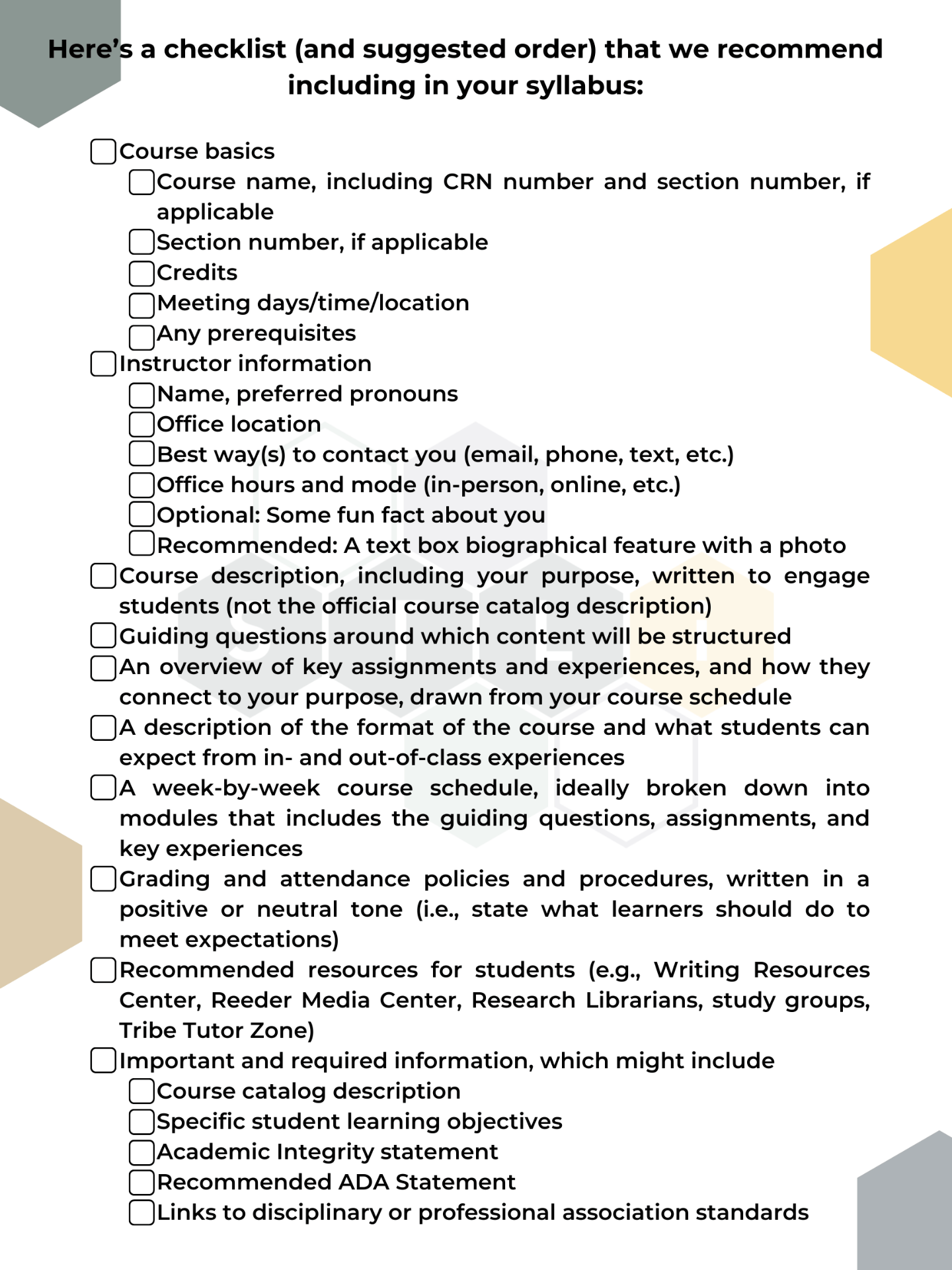Course Design: Syllabus Design
What It Is
The syllabus for a course is a contract between instructors and learners and might be the first impression learners have of a course. It sets the tone and provides an overview for what the semester will be like. Think of it as a course brochure or a map guiding learners through the course.
Why It Matters
The syllabus is a way to communicate information about a course and draw learners into the learning community. It can be used to tell the story of a course before including required information from the Provost, Dean, or Chair/Program Director. A clearly formatted syllabus also helps learners navigate course requirements, deadlines, and expectations for attendance and participation. When learners know what is expected of them, they are more likely to be successful in the course.
Apply it
To draw learners in, start with why. The “why” is the overarching purpose for the course. It’s what should drive student learning and the selection of course topics, readings, materials and experiences. It’s the big picture for why a course is important. Beyond program-of-studies requirements, consider why a course is important to learners and their future study, career, or life beyond the university.

Resources
- – Engage: STLI Academy – Course Syllabus Design
- -Read: STLI Syllabus Starter
- – Read: Building Your Course Around Design Principles
- – Read: Reframing Accommodations on Your Syllabus
- – Listen: All Students Considered – Syllabus Stories
- – Listen: STLI Podcast – The Syllabus Episode
- – Watch: Designing Your Syllabus
- – Watch: Writing Your Syllabus with Michael Gaynes and Lori Jacobsen
- – Watch: What Makes A Syllabus Great?
- – Watch: The Syllabus as A Living Document
References
Eng, N. (2018). Creating an engaging syllabus: A concise, 7-step guide for professors [Kindle edition].
Gannon, K. (2022). How to create a syllabus. The Chronicle of Higher Education.
Cite This Resource
Studio for Teaching & Learning Innovation. (2023, January). Course design: Syllabus design [Teaching resource]. https://stli.wm.edu/academicresources/syllabus-design-resources/
Updated 7/2024